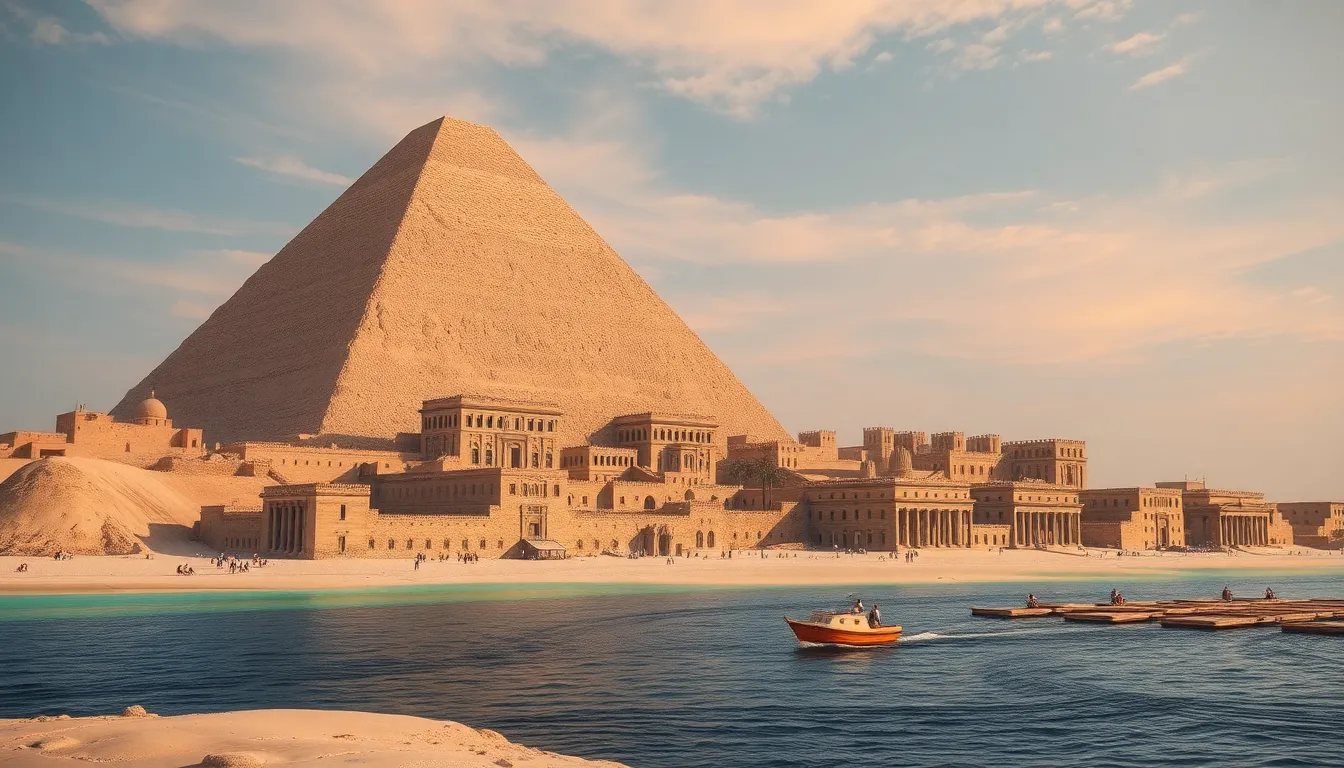The Mythical Geography of the City of Dakhla
I. Introduction
Dakhla, a city nestled within the heart of the Western Desert of Egypt, holds significant geographical and cultural importance. It is not only a site of natural beauty but also a rich tapestry of myths and legends that have evolved over centuries. The purpose of exploring Dakhla’s mythical geography is to understand how its unique landscape has shaped the stories, beliefs, and identity of its people.
II. Historical Context of Dakhla
Dakhla has been a focal point for various ancient civilizations, each leaving its mark on the region’s cultural and geographical identity. From the early Egyptians who revered its natural resources to later influences from Greek and Roman explorers, Dakhla has been a crossroads of cultures and ideas.
- Ancient Egyptians: They utilized the oases for agriculture and trade, incorporating the region’s features into their mythology.
- Greeks and Romans: Their explorations led to further documentation of Dakhla’s landscapes and the integration of local myths into their own narratives.
Over time, Dakhla’s geographical identity has evolved, influenced by its natural features and the civilizations that have inhabited it, creating a rich historical tapestry intertwined with mythology.
III. The Natural Landscape of Dakhla
The natural landscape of Dakhla is characterized by its stunning geographic features, including vast deserts, serene coastlines, and beautiful lagoons. Each element plays a crucial role in local myths and legends.
- Deserts: The expansive sandy dunes are often depicted in stories as realms of spirits and deities.
- Coastlines: The interaction between land and sea gives rise to tales of sea gods and mermaids.
- Lagoons: The calm waters are believed to be the dwelling places of mystical creatures.
These natural elements not only define the geography of Dakhla but also serve as a backdrop for numerous local myths that enrich the cultural narrative.
IV. Mythical Narratives Associated with Dakhla
The geography of Dakhla is steeped in folklore and local legends that celebrate its unique landscapes. Stories of gods, spirits, and mythical creatures abound, often reflecting the characteristics of the land.
- Folklore: Tales of ancient deities who roamed the deserts and blessed the land with fertility.
- Local Legends: Myths about water spirits that reside in the lagoons, protecting the fishermen and their families.
These narratives significantly impact the cultural identity of the people of Dakhla, fostering a sense of belonging and continuity through generations.
V. The Influence of the Sahara Desert
The Sahara Desert, with its vast and arid expanses, plays a pivotal role in shaping both the geography and mythology of Dakhla. It is a landscape that inspires awe and reverence, often depicted as a mystical realm in local stories.
- Geographical Impact: The desert shapes the climate, flora, and fauna of the region, influencing survival and lifestyle.
- Mythical Beings: Stories of mythical beings such as the Djinn, who are said to inhabit the desert, add a layer of intrigue and fear.
These stories serve as cautionary tales and reflections on the human condition, illustrating the relationship between the people and their environment.
VI. The Coastal Mystique of Dakhla
The Atlantic Ocean’s influence on Dakhla cannot be overstated, as it intertwines with local myths and legends to form a rich maritime culture. The sea is often viewed as a source of life, mystery, and danger.
- Maritime Myths: Legends of shipwrecks and sea monsters that guard the coast, warning sailors of the ocean’s unpredictability.
- Cultural Significance: The ocean is integral to the local economy and identity, inspiring festivals and rituals dedicated to sea deities.
This coastal mystique contributes significantly to the cultural fabric of Dakhla, providing a sense of adventure and connection to the wider world.
VII. Cultural Practices and Mythical Geography
Mythology plays a crucial role in shaping local rituals and traditions in Dakhla. The integration of mythical geography into art, storytelling, and community practices is evident throughout the region.
- Rituals: Many local ceremonies are dedicated to the spirits of the land and sea, reflecting respect for nature and its mythical aspects.
- Art and Storytelling: Local artists often depict mythical creatures and landscapes in their works, preserving the narratives for future generations.
This cultural expression reinforces the connection between the people of Dakhla and their mythical geography, ensuring that these stories remain alive and vibrant.
VIII. Conclusion
In summary, the mythical geography of Dakhla is a rich interplay of natural landscapes, historical narratives, and cultural practices. The interplay of deserts, coastlines, and folklore creates a unique identity for the region, deeply rooted in both its geography and its myths.
Reflecting on the importance of preserving these narratives is essential for future generations. As we continue to explore and understand Dakhla’s mythical geography, we safeguard the stories that define its cultural heritage, ensuring that they resonate with both the local community and the wider world.




